Vogelgat’s Cape Sundew (Drosera Capensis Vogelgat)
$20.00
This ‘wide-leaved’ form is the robust version of the species in which the lamina and petiole are both are more than 3 mm wide and in the petiole is about 60% the width of the lamina (Fig. 4). The lamina is defined by the presence of insect-trapping hairs, is about the same length as the petiole, and is up to 8 mm wide. The underside of the leaves has a sparse cover of colorless eglandular hairs. Flowers are large, often around 3 cm diameter with broadly ovate overlapping petals that are usually dark purple in color. The stigmas are irregularly obovate to elliptic and widen conspicuously from the terete style segments. These plants slowly develop conspicuous stems to 15 cm tall. This form is also known as the ‘broad-leaf’ form (GrowSundews.com 2020). Also, many of the ‘giant’ plants in cultivation are of this form. This form is restricted to the south western part of the Western Cape where is has been recorded at the Silvermine Nature Reserve, Vogelgat Private Nature Reserve, and the former Bergvliet Farm (now part of urban Cape Town). Plants from Vogelgat in cultivation often have pale purple flowers.
- Reviews (0)
Be the first to review “Vogelgat’s Cape Sundew (Drosera Capensis Vogelgat)”
You must be logged in to post a review.

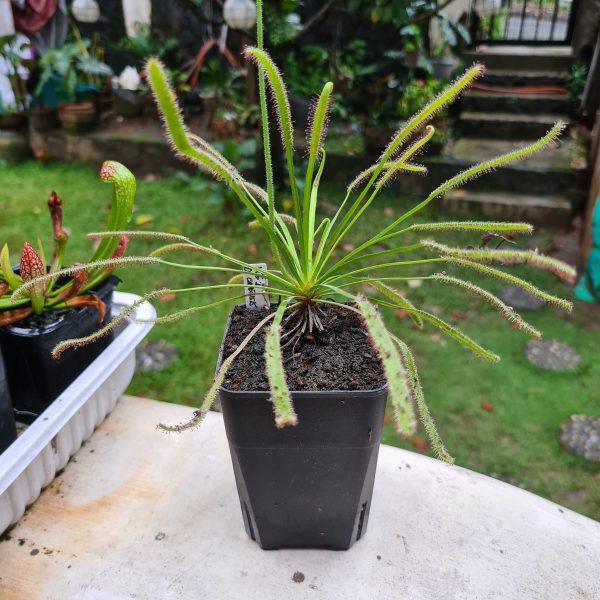
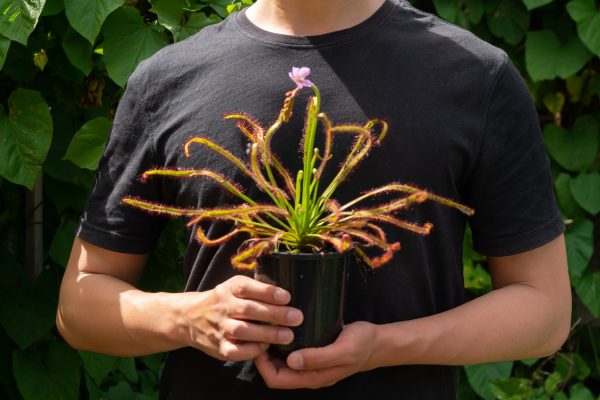
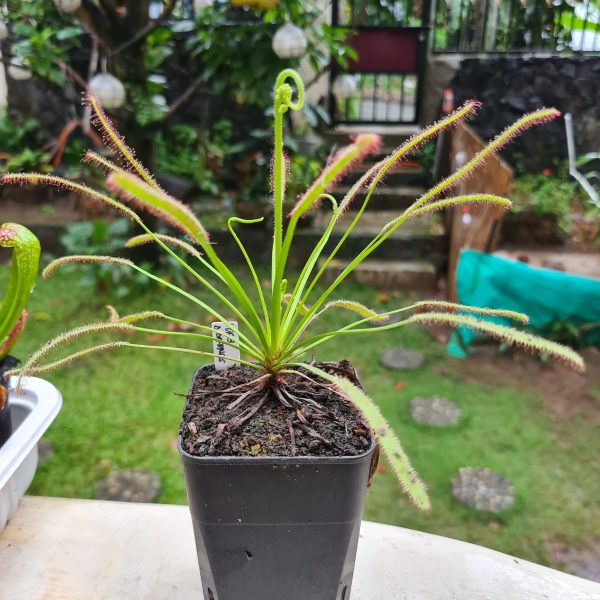
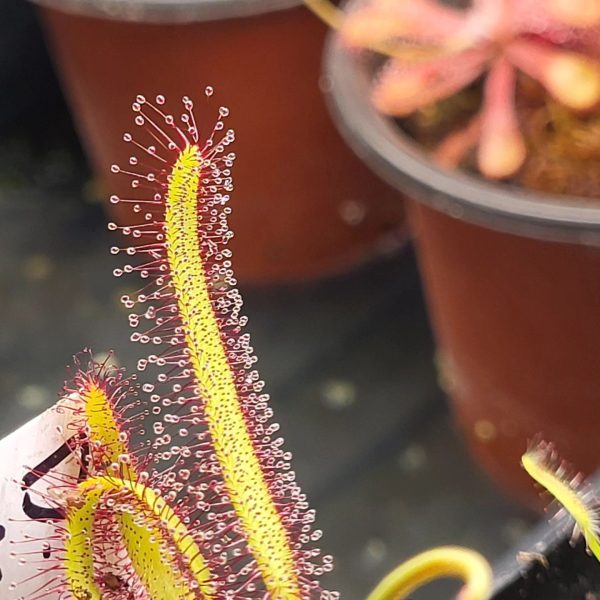
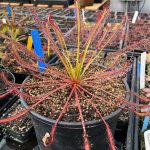
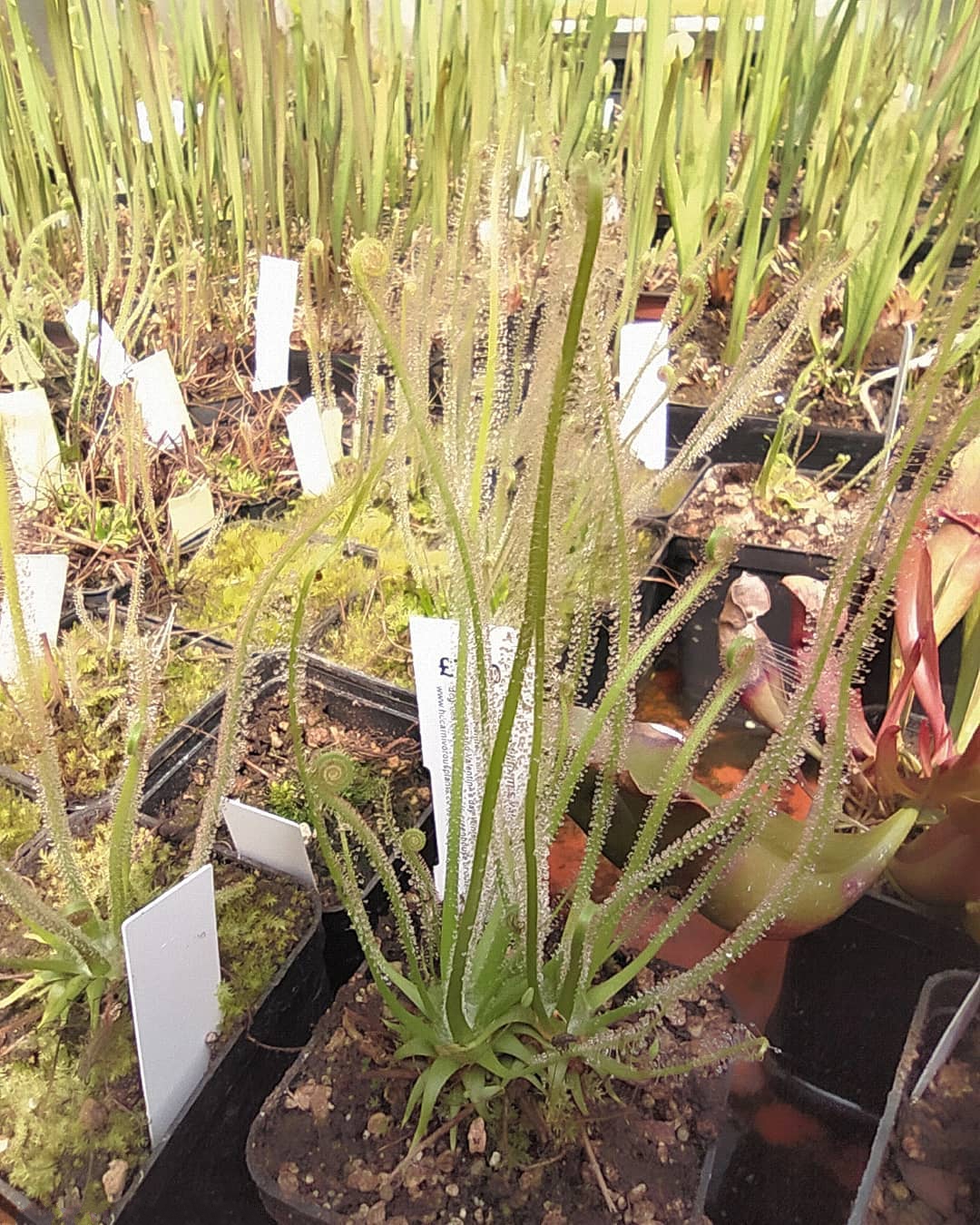
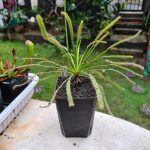


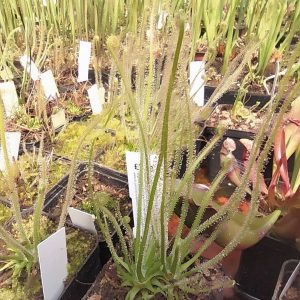
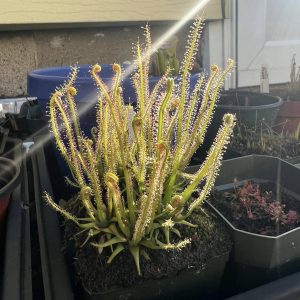
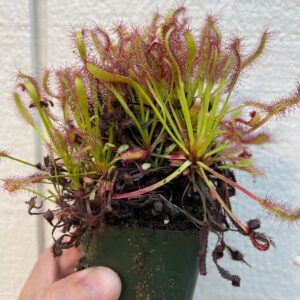
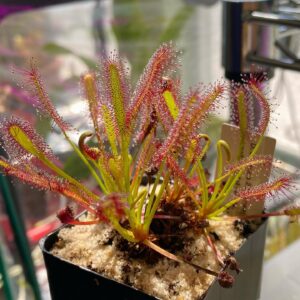
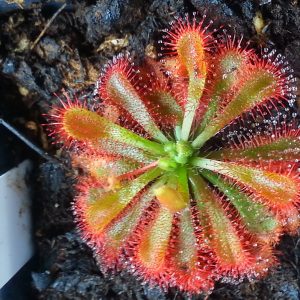
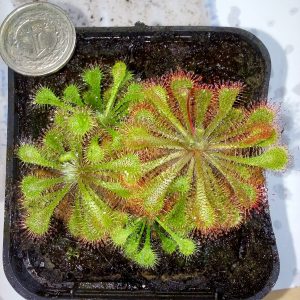
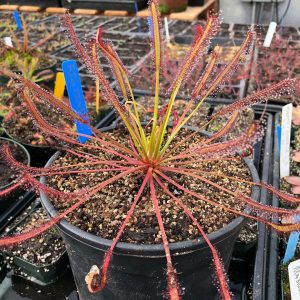
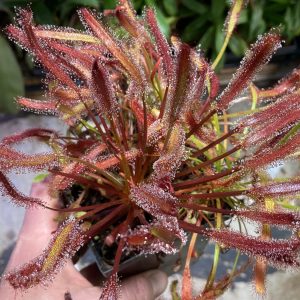
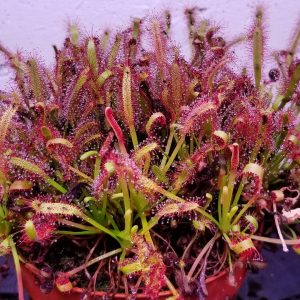
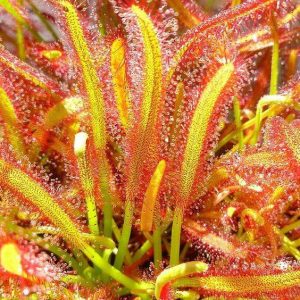
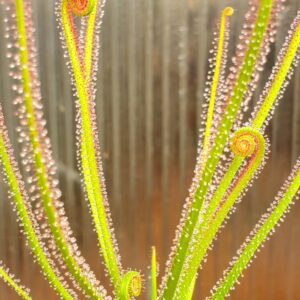

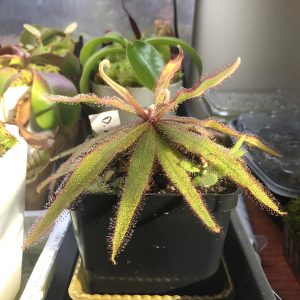
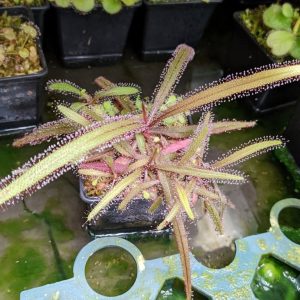
Reviews
There are no reviews yet.